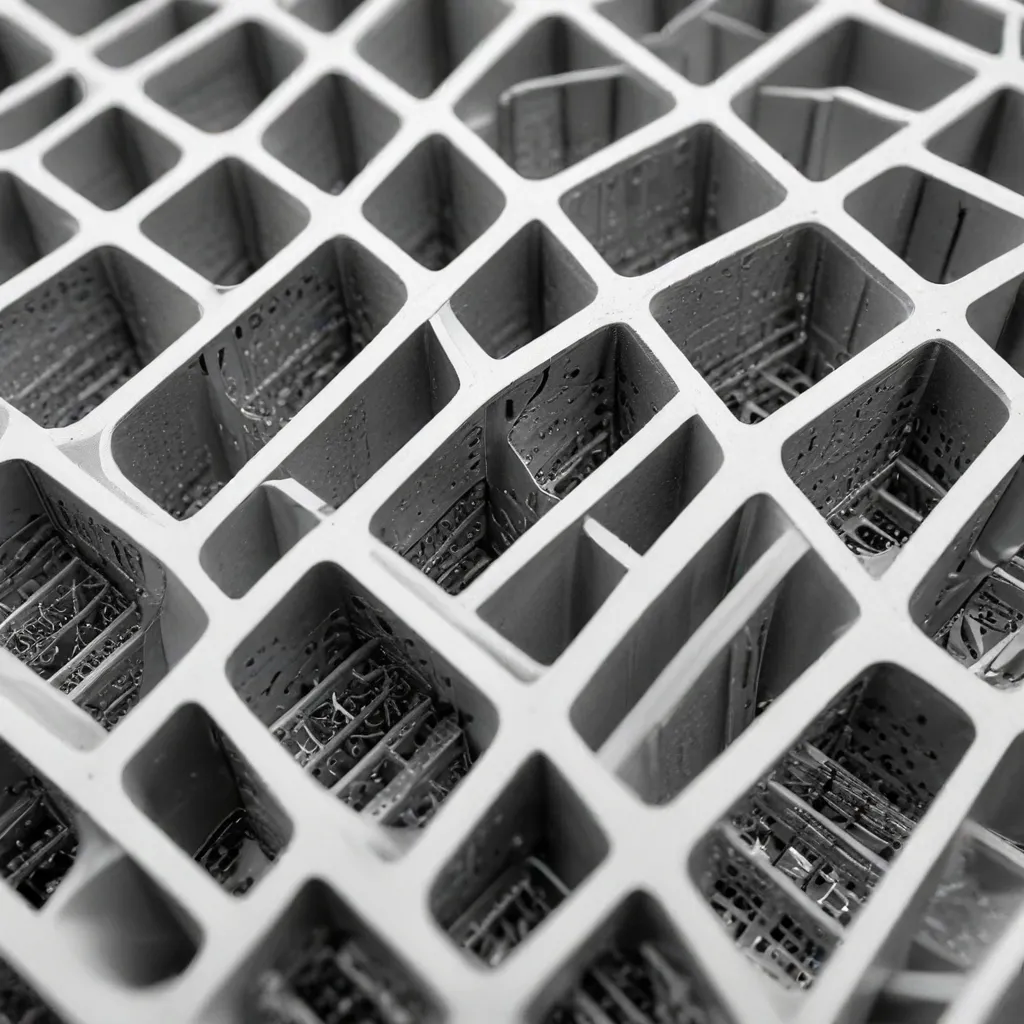
As a seasoned expert in air-cooled heat exchangers, I’m excited to share insights on how the advancements in additive manufacturing (AM) are revolutionizing the design and application of these critical thermal management components. In this comprehensive article, we’ll explore the benefits of AM for air-cooled heat exchangers, delve into the engineering considerations, and examine real-world applications across various industries.
Unleashing Design Freedom with Additive Manufacturing
Traditionally, the manufacturing of air-cooled heat exchangers has been constrained by the limitations of conventional fabrication techniques, such as stamping, casting, or welding. These methods often struggle to create the intricate, high-performing geometries that modern thermal management challenges demand. However, the rise of additive manufacturing has ushered in a new era of design freedom, empowering engineers to push the boundaries of heat exchanger performance.
Customized Geometries: One of the primary advantages of AM is the ability to create highly customized heat exchanger designs. Unlike subtractive manufacturing processes, which remove material from a solid block, additive techniques allow the fabrication of complex, organic shapes that can be tailored to specific application requirements. This opens up opportunities to optimize airflow, increase surface area, and maximize heat transfer efficiency in ways that were previously impractical or even impossible.
Design Complexity: Additive manufacturing enables the creation of intricate internal structures, such as lattices, pin fins, and microchannels, which can significantly enhance the heat transfer capabilities of air-cooled heat exchangers. These complex geometries, which would be challenging or prohibitively expensive to produce using traditional methods, can now be readily realized through AM, leading to substantial performance improvements.
Rapid Prototyping: Another key benefit of additive manufacturing is the ability to rapidly prototype and iterate on heat exchanger designs. By leveraging 3D printing technologies, engineers can quickly produce physical models, test their performance, and refine the design, all within a shortened development cycle. This accelerates the path to market, allowing organizations to stay ahead of the competition and deliver innovative thermal management solutions.
Engineering Considerations for AM Heat Exchangers
When designing air-cooled heat exchangers using additive manufacturing, engineers must carefully consider several technical factors to ensure optimal performance and reliability.
Material Selection
The choice of materials for AM-fabricated heat exchangers is crucial, as it directly impacts thermal conductivity, structural integrity, and manufacturing feasibility. Common materials used in this application include aluminum alloys, such as AlSi10Mg, as well as copper and its alloys. Each material has its own advantages and trade-offs, and the selection process must balance thermal performance, mechanical properties, and cost-effectiveness.
Heat Transfer Enhancement Techniques
Additive manufacturing enables the incorporation of advanced heat transfer enhancement features, such as:
* Intricate fin geometries: Optimized fin designs, including wavy, louvered, or offset patterns, can significantly increase the surface area and disrupt boundary layers, leading to enhanced heat transfer.
* Embedded microchannels: Integrating microscale fluid channels within the heat exchanger structure can facilitate more efficient convective heat transfer.
* Porous or lattice structures: Lightweight, high-surface-area porous or lattice-based heat exchangers can dramatically improve thermal performance.
Structural Integrity and Fatigue Life
Air-cooled heat exchangers often operate under demanding conditions, with exposure to thermal cycling, vibrations, and mechanical stresses. Additive manufacturing processes must ensure the structural integrity and long-term reliability of the heat exchanger components, accounting for factors such as material anisotropy, porosity, and post-processing treatments.
Thermal Management Simulations
Numerical simulations play a crucial role in the design and optimization of AM-fabricated air-cooled heat exchangers. Computational fluid dynamics (CFD) and finite element analysis (FEA) can be used to predict fluid flow, heat transfer, and thermal-mechanical performance, allowing engineers to fine-tune the design before manufacturing.
Maintenance and Serviceability
When designing AM-based air-cooled heat exchangers, it’s essential to consider the maintenance and serviceability requirements. Factors such as access for cleaning, replacement of individual components, and the potential for in-situ repair or modification should be addressed to ensure long-term reliability and minimize downtime.
Real-World Applications of AM Heat Exchangers
The versatility and design freedom offered by additive manufacturing have opened up new possibilities for air-cooled heat exchanger applications across various industries.
Electronics Cooling
In the electronics industry, AM-fabricated heat sinks and cold plates with highly customized geometries have demonstrated remarkable improvements in cooling performance for high-power electronic components, such as power electronics, data center servers, and telecommunications equipment.
Automotive and Aerospace
The transportation sector has embraced additive manufacturing for air-cooled heat exchangers, particularly in applications where weight savings and compact packaging are critical. These include engine oil coolers, charge air coolers, and cabin HVAC systems in both automotive and aerospace applications.
Industrial Equipment
Additive manufacturing has proven valuable in the design of air-cooled heat exchangers for industrial equipment, such as compressors, generators, and process plants. The ability to create complex geometries has enabled enhanced thermal management, improved energy efficiency, and reduced maintenance requirements.
Renewable Energy
In the renewable energy sector, additive manufacturing has found applications in the design of air-cooled heat exchangers for concentrated solar power (CSP) systems, wind turbine nacelles, and geothermal power plants. These custom-engineered thermal management solutions help improve overall system performance and reliability.
Conclusion
The advent of additive manufacturing has ushered in a new era of air-cooled heat exchanger design and optimization. By leveraging the design freedom and customization capabilities of AM, engineers can now create highly efficient, tailored thermal management solutions that push the boundaries of performance and versatility.
As the technology continues to evolve, we can expect to see even more innovative applications of AM-fabricated air-cooled heat exchangers, further driving advancements in industries ranging from electronics to renewable energy. The future of thermal management is undoubtedly shaped by the remarkable capabilities of additive manufacturing.
For more information on the latest developments in air-cooled heat exchanger design and engineering, be sure to explore the resources available on the Air Cooled Heat Exchangers blog. Our team of experts is dedicated to providing you with the insights and practical guidance you need to stay ahead in the world of thermal management.

